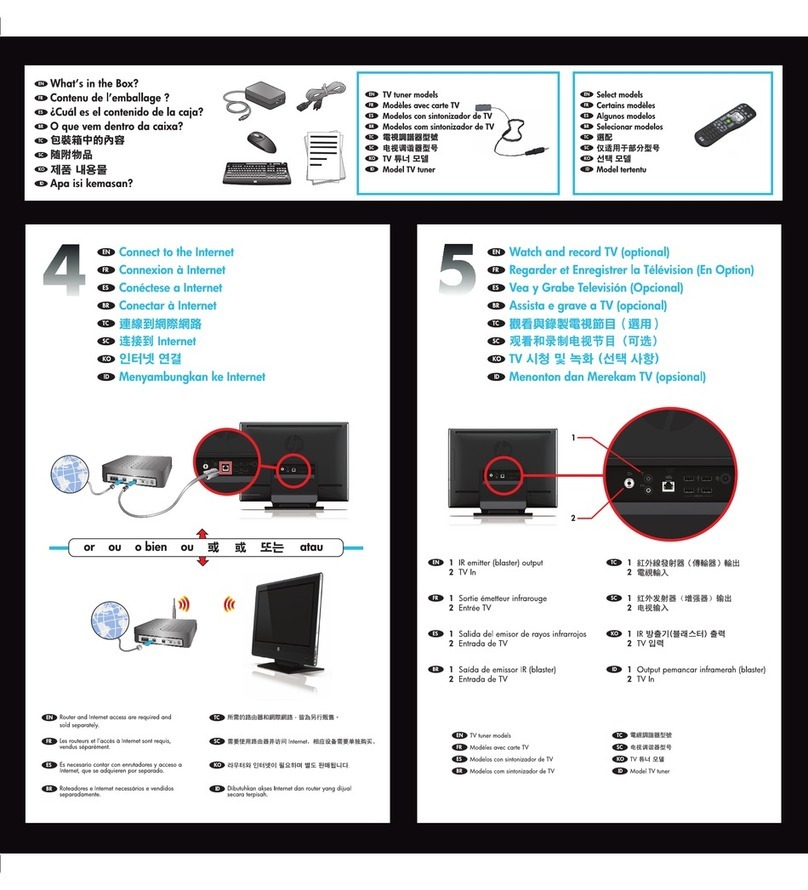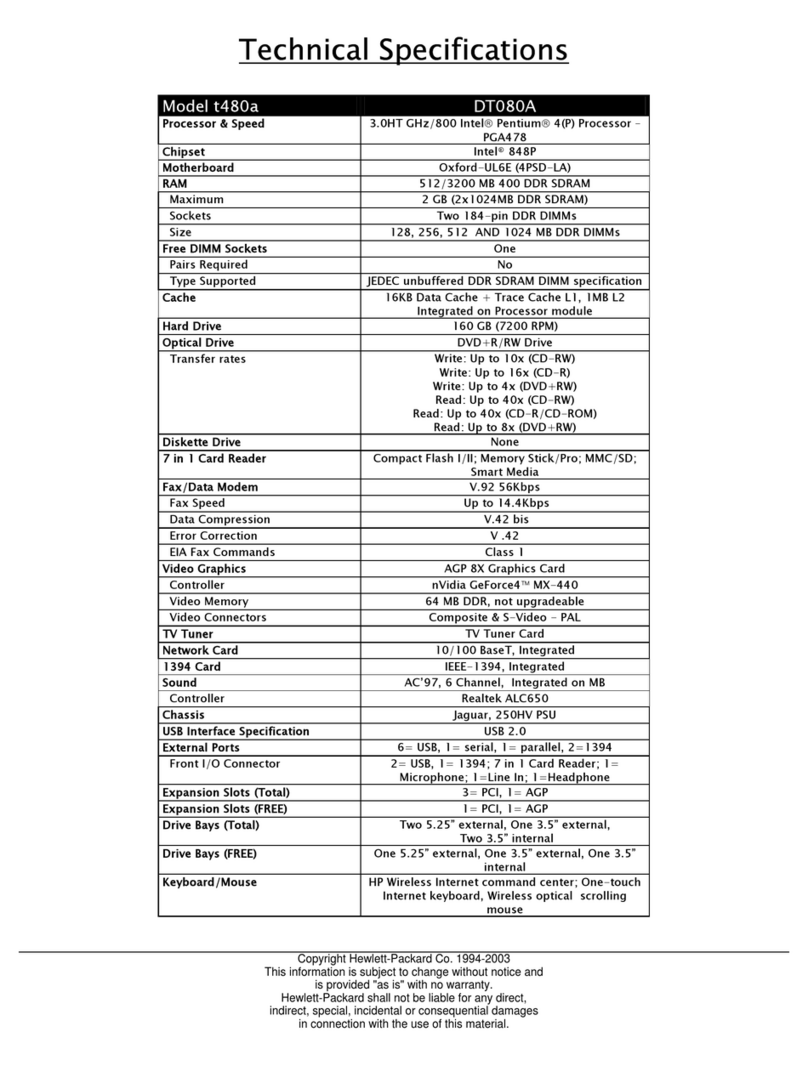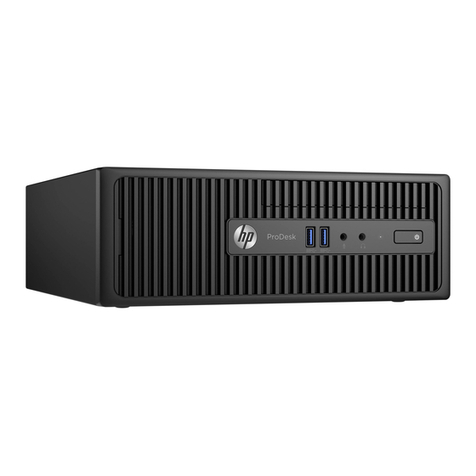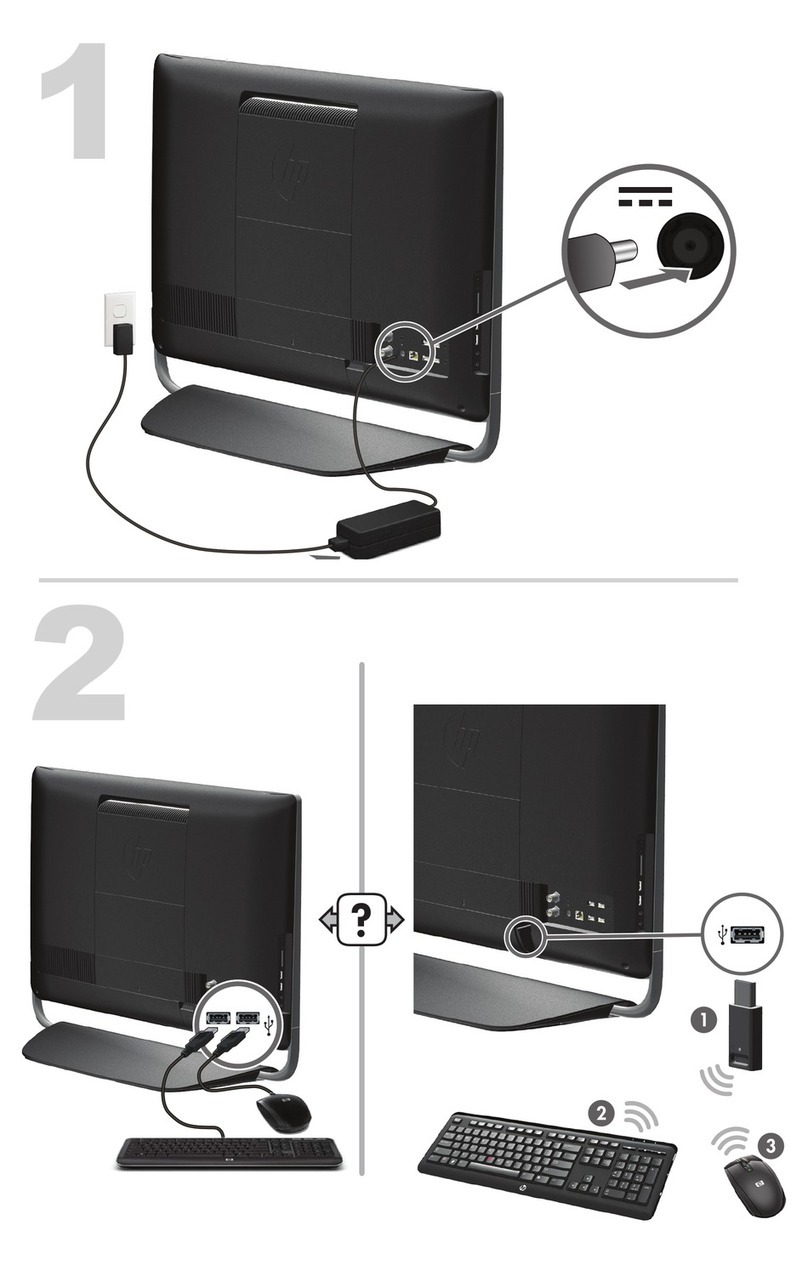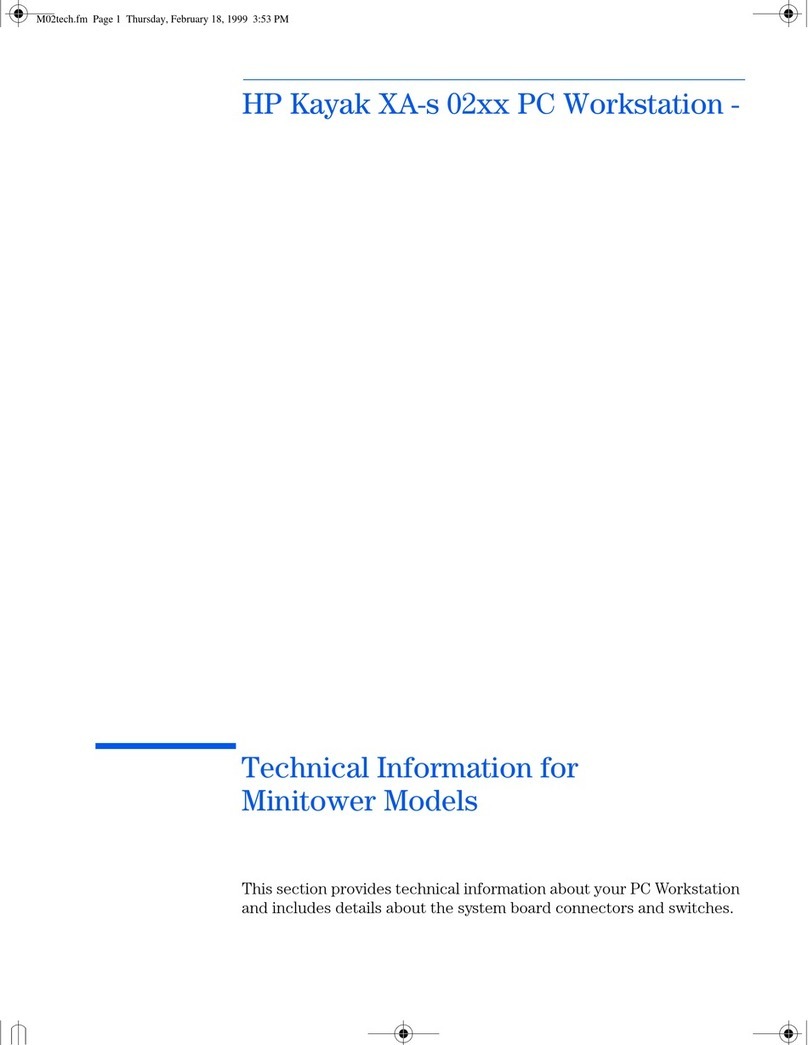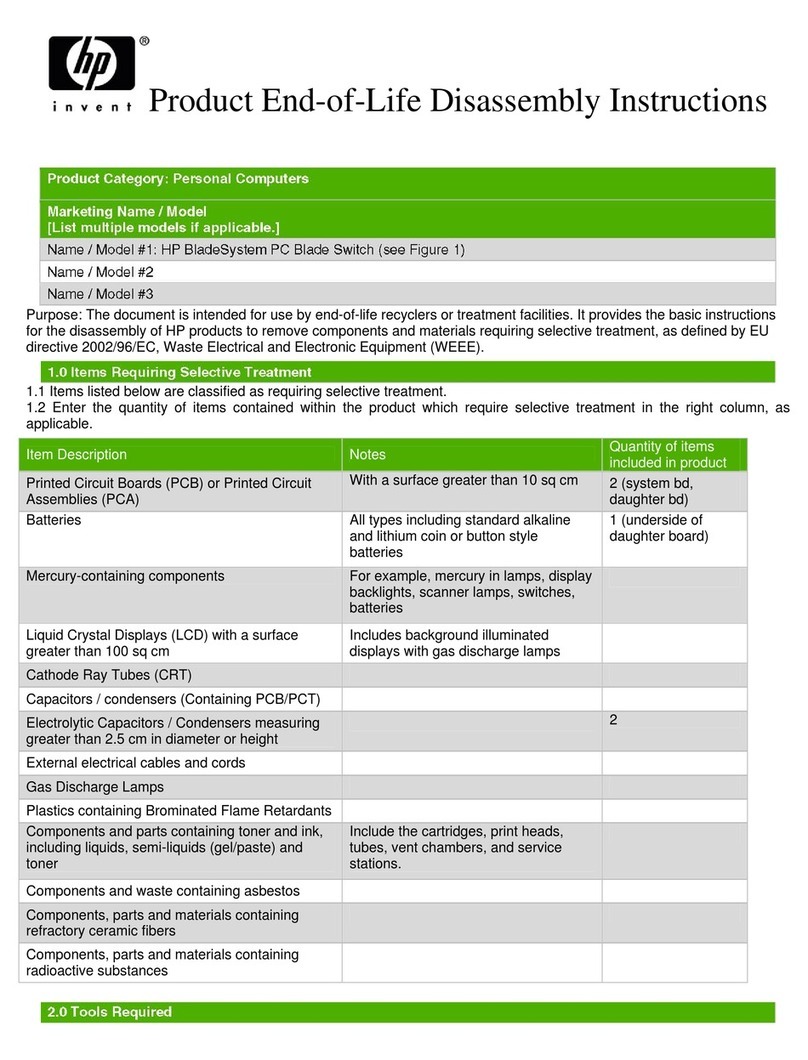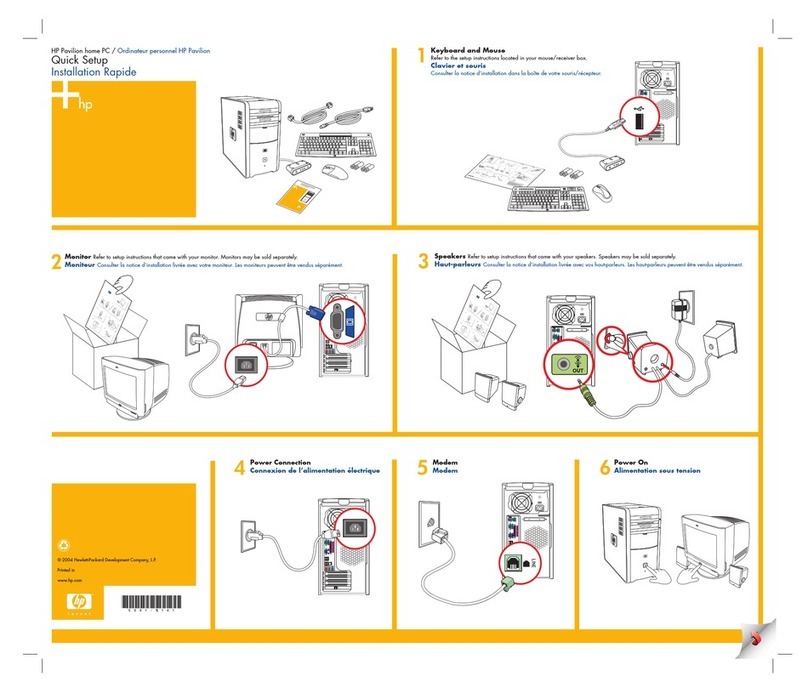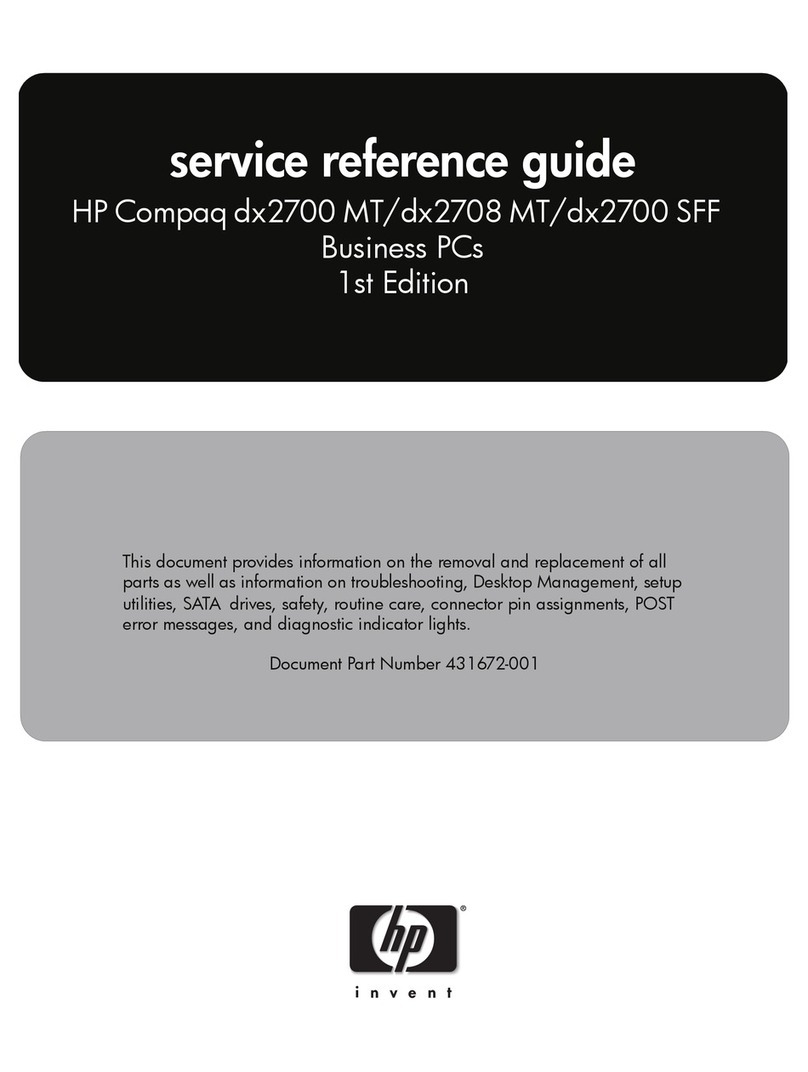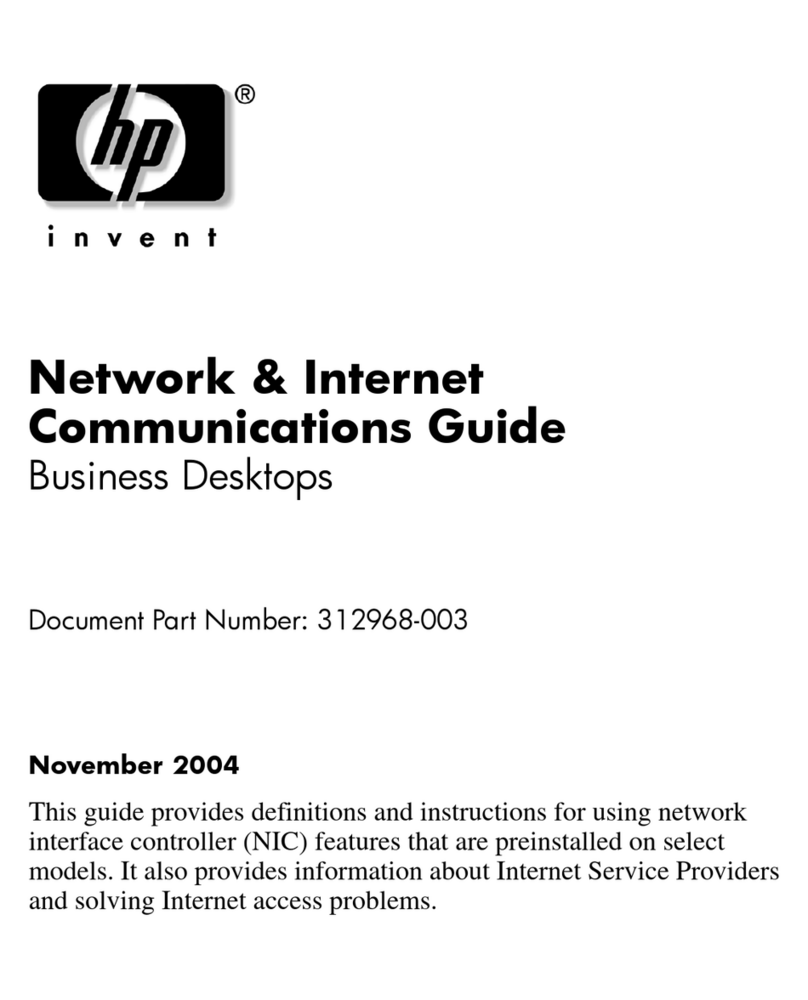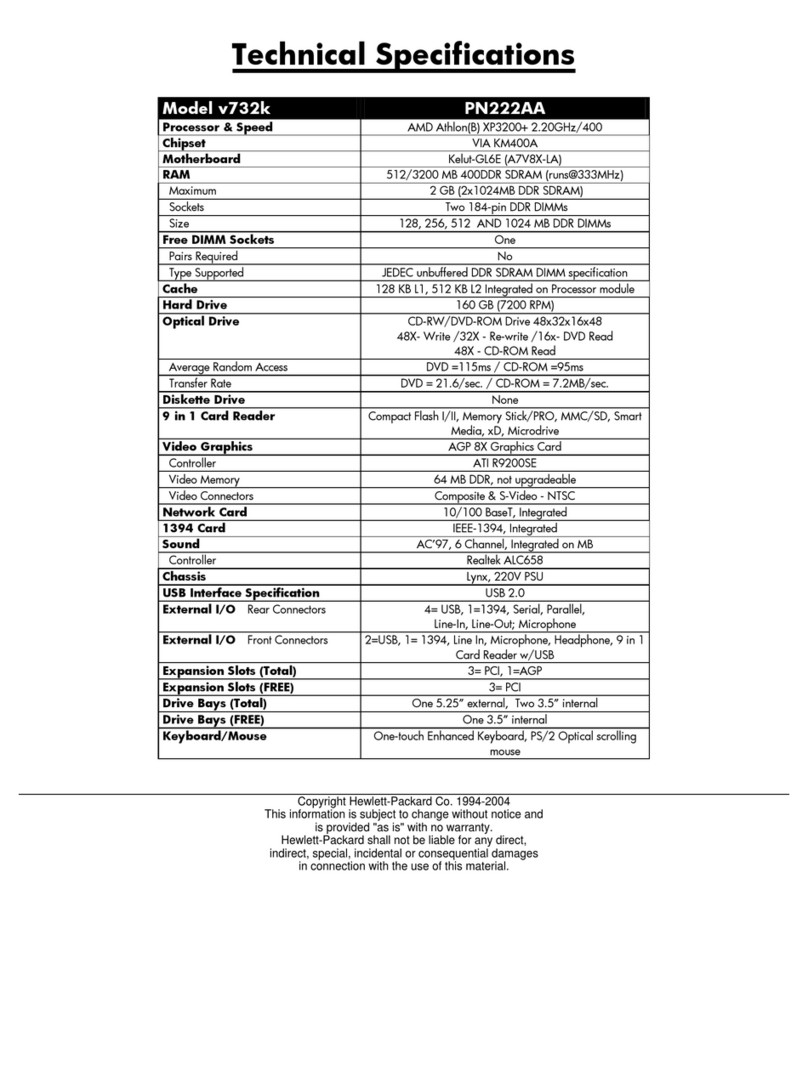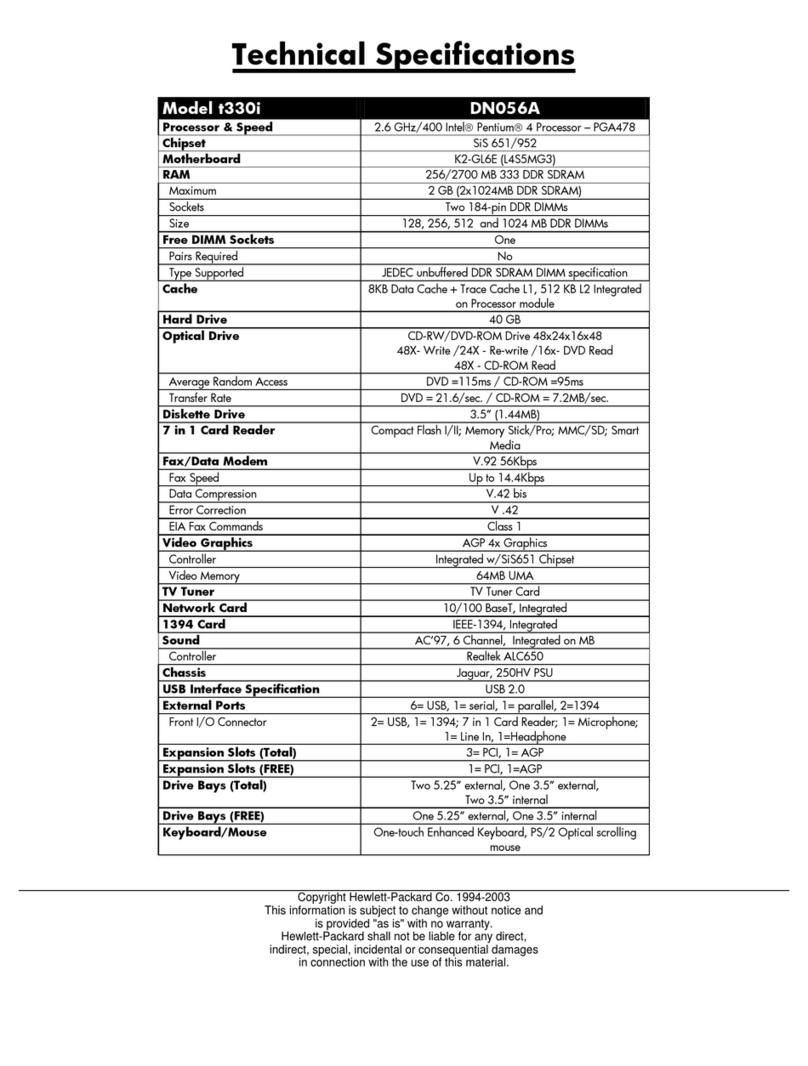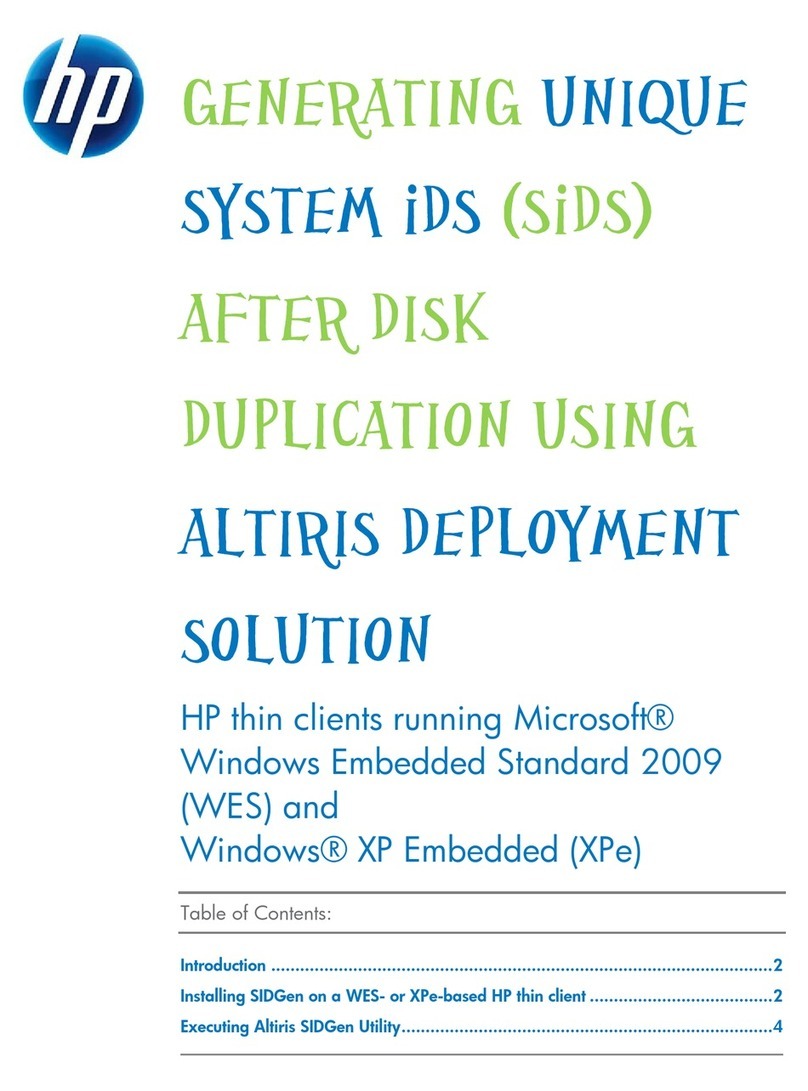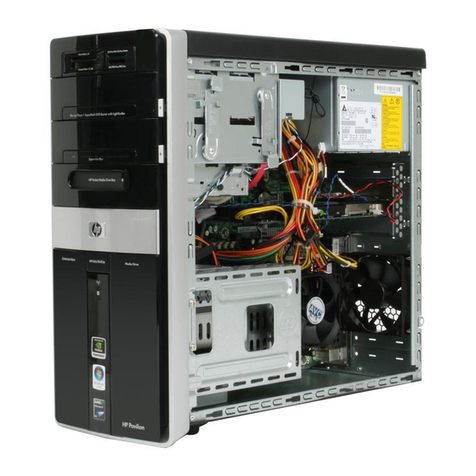
dx7510/dx7518 Illustrated Parts & Service Map, MT chassis 516948-001 page4
Password Security
If the system is equipped with an embedded security device, refer to the HP ProtectTools
Security Manager Guide at http://www.hp.com. Establishing a setup password through
Computer Setup prevents reconfiguration of the computer (use of the Computer Setup (F10)
utility) until the password is entered.
Establishing a Setup or Power-On password
1. Turn on or restart the computer. If you are in Windows, click Start > Shut Down >Restart.
2. As soon as the computer is turned on, press F10 when the monitor light turns green to enter
Computer Setup. Press Enter to bypass the title screen, if necessary. If you do not press F10
when prompted, a restart will be necessary.
3. To establish a Setup password, select Security > Setup Password and follow the instructions
on the screen.
- or -
To establish a Power-On password, select Security > Power-On Password and follow the
instructions on the screen
4. Before exiting, click File > Save Changes and Exit.
Changing a Setup or Power-On password
If the system is equipped with an embedded security device, refer to the HP ProtectTools Secu-
rity Manager Guide at http://www.hp.com.
1. Turn on or restart the computer. If you are in Windows, click Start > Shut Down > Restart.
To change the Setup password, go to step 2.
To change the Power-on password, go to step 3.
2. To change the Setup password, as soon as the computer is turned on, press F10 when the
monitor light turns green to enter Computer Setup. Press Enter to bypass the title screen, if
necessary.
3. When the key icon appears, type your current password, a slash (/) or alternate delimiter
character, your new password, another slash (/) or alternate delimiter character, and your new
password again as shown:
current password/new password/new password.
NOTE: Type the new password carefully since the characters do not appear on the screen.
4. Press Enter.
The new password will take effect the next time the computer is restarted.
Deleting a Power-On or Setup password
If the system is equipped with an embedded security device, refer to the HP ProtectTools Secu-
rity Manager Guide at http://www.hp.com.
1. Turn on or restart the computer. If you are in Windows, click Start > Shut Down > Restart.
To delete the Setup password, go to step 2.
To delete the Power-On password, go to step 3.
2. To change the Setup password, as soon as the computer is turned on, press F10 when the
monitor light turns green to enter Computer Setup. Press Enter to bypass the title screen, if
necessary.
3. When the key icon appears, type your current password followed by a slash (/) or alternate
delimiter character as shown. Example: currentpassword/
4. Press Enter.
HP Insight Diagnostics
The HP Insight Diagnostics utility allows you to view information about the hardware configu-
ration of the computer and perform hardware diagnostic tests on the subsystems of the com-
puter. The utility simplifies the process of effectively identifying, diagnosing, and isolating
hardware issues.
Insight Diagnostics may be downloaded from the HP Web site using the following procedure:
1. Go to www.hp.com
2. Click the Software & Download driver link.
3. Enter the product number (for example, dc7510) in the text box and press the Enter key.
4. Select the specific product.
5. Select the OS.
6. Click the Diagnostics link.
7. Select HP Insight Diagnostics Offline Edition.
8. Click Download.
NOTE: The download includes instructions on how to create a bootable CD.
Clearing CMOS
1. Remove the chassis access panel.
2. Locate the CMOS jumper.
3. Remove the blue CMOS jumper from pins 4 and 6 and put the jumper on pins 2 and 4. This
clears CMOS.
4. Put the jumper back on pins 4 and 6.
5. Replace the chassis access panel and reconnect the power cord.
6. Turn on the computer and allow it to start.
Recovering the Configuration Settings
Recovering the configuration settings established in the Computer Setup (F10) Utility requires
that you first back up the settings before a recovery is needed.
The CMOS Save/Load utility can be found at http://www.hp.com under the Software & Driver
Downloads for your specific model. Download the firmware files into a folder on a removable
storage device. It is recommended that you save any modified computer configuration settings
to a diskette, a USB flash media device, or a diskette-like device (a storage device set to emulate
a diskette drive) and save the diskette or device for possible future use.
Backing Up the CMOS
1. Make sure the computer to be backed up is turned on. Connect the removable storage to the-
computer.
2. Boot to DOS.
3. Type N:\folder\BIOS.exe SAVE:ABC001.DAT (where N is the drive letter of the removable
storage) to save the CMOS setting to the removable storage device.
Restoring the CMOS
1. Make sure the target computer is turned on. Connect the removable storage to the target com-
puter.
2. Boot to DOS.
3. Type N:\folder\BIOS.exe LOAD:ABC001.DAT (where N is the drive letter of the removable
storage) to load the custom CMOS setting onto the target system.
Computer Setup Menu (continued)
Heading Option / Description
Integrated
Peripher-
als
USB Controller Disables/enables USB controller.
USB Legacy Support Disables/enables USB legacy support.
HD Audio Disables/enables HD audio controller.
Onboard LAN Con-
troller
Disables/enables onboard LAN controller.
Onboard LAN Boot
ROM
Disables/enables the boot ROM of the onboard LAN
chip.
HP Network Clone
ROM
Disables/enables HP Network Clone ROM.
This option is available for Network Clone users only.
Onboard FDC Con-
troller
Disables/enables onboard FDC controller.
Serial Port 1 Allows you to select a setting for the onboard serial port:
• Disabled
•3F8/IRQ4
•2F8/IRQ3
•3E8/IRQ4
•2E8/IRQ3
• Auto
Parallel Port Allows you to select a setting for the onboard parallel
port:
• Disabled
• 378/IRQ7
• 278/IRQ5
•3BC/IRQ7
Parallel Port Mode Allows you to select parallel port mode:
•SPP
•EPP
•ECP
•ECP+EPP
ECP Mode Use DMA If Parallel Port Mode is set to ECP or ECP+EPP, allows
you to set the DMA channel for ECP Mode
to 1 or 3.
Power
Manage-
ment
Setup
PCI-E Wake on PME Disables/enables PCI-E Wake on PME.
ACPI Function Disables/enables ACPI functions. Changing this item
can make the existing OS unusable.
ACPI Suspend Type Allows you to set type of ACPI sleep mode:
• S1 (Power On Suspend)
• S3 (Suspend To RAM)
•S1&S3
Resume on PME Disables/enables Resume by PME.
Wake on Ring Disables/enables Resume by Ring.
Resume by Alarm Disables/enables RTC (real-time clock) alarm.
Date (of Month)
Alarm
If RTC Alarm Resume is enabled, allows you to select
the day of the month for resumption of RTC alarm. (Set
to 0 for every day.)
Time (hh:mm:ss)
Alarm
If Resume on Alarm is enabled, allows you to select
what time the RTC alarm will resume.
Restore on AC/Power
Loss
Allows you to select system power loss behavior:
•PowerOn
•PowerOff
• Last State
PnP/PCI
Configu-
rations
Reset Configuration
Data
Disables/enables automatic reconfiguration.
The default is Disabled. Select Enabled to reset
Extended System Configuration Data (ESCD) when you
exit Setup, if you have installed a new add-on and the
system reconfiguration has caused such a serious con-
flict that the OS cannot boot.
Resources Controlled
By
Allows you to select whether resources are controlled
automatically or manually:
• Auto (ESCD¨CExtended Storage Configuration
Data)
•Manual
BIOS can automatically configure all the bootable and
Plug-and-Play-compatible devices. If you choose Auto,
you cannot select IRQ, DMA and memory base address
fields since BIOS automatically assigns them.
IRQ Resources
• IRQ-3 assigned to
• IRQ-4 assigned to
• IRQ-5 assigned to
• IRQ-7 assigned to
• IRQ-9 assigned to
• IRQ-10 assigned to
• IRQ-11 assigned to
• IRQ-12 assigned to
• IRQ-14 assigned to
• IRQ-15 assigned to
When resources are controlled manually, allows you to
assign each system interrupt a type, depending on the
type of device using the interrupt.
Legacy ISA for devices compliant with the original PC
AT bus specification, PCI/ISA PnP for devices compli-
ant with the Plug-and-Play standard whether designed
for PCI or ISA bus architecture.
Hardware
Monitor
Setup
Reset Case Open Sta-
tus
Disables/enables resetting of the case open status.
Fan Controller Disables/enables auto fan control mode.
CPU Fan Speed (view only)
System Fan Speed (view only)
CPU Fan Fault
Detected
Disables/enables detection of CPU failure during POST.
SYS Fan Fault Detect Disables/enables detection of fan failure during POST.
(Action
Choices)
Load Optimized
Defaults
Allows you to reset Computer Setup to factory defaults.
Set Supervisor
Password
Allows you to establish a password to control access to
Computer Setup.
Set User Password Allows you to establish a password to control access to
the computer. (Supervisor password must be set before
you can set a User password.)
Save & Exit Setup Allows you to save current settings and exit Computer
Setup.
Exit Without Saving Allows you to exit Computer Setup without saving
changes.


